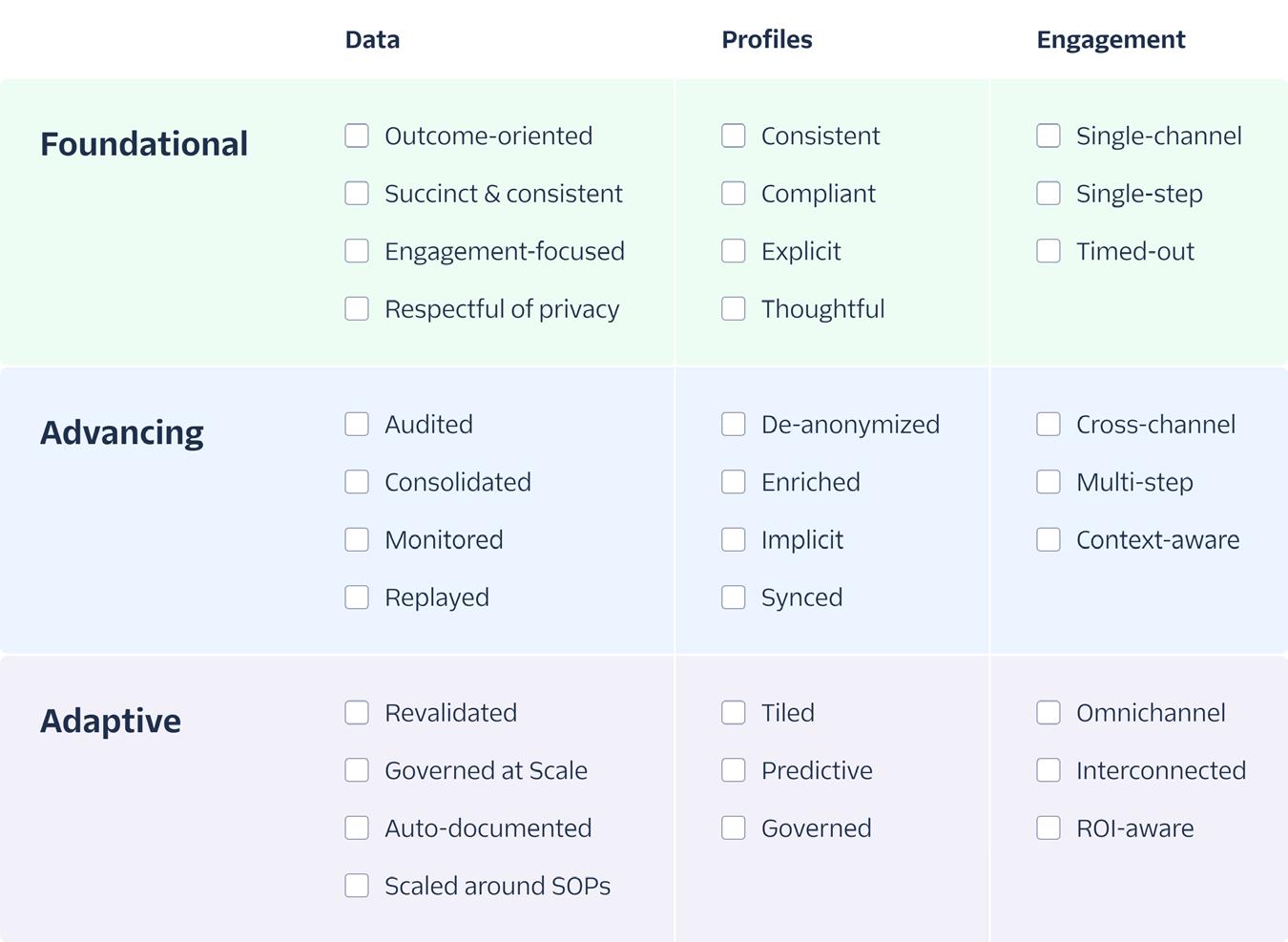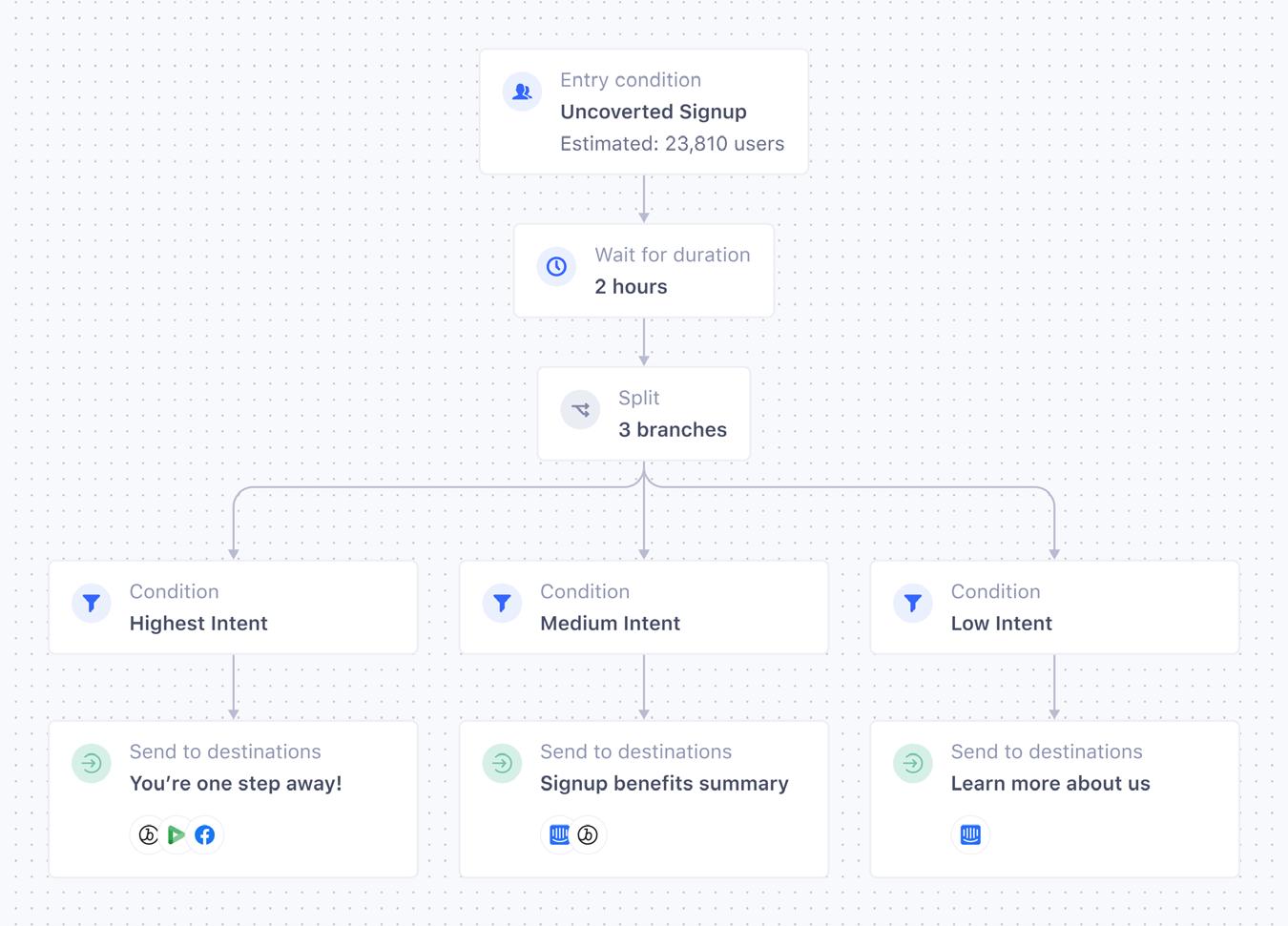
1 minute read
Foundational Data
Level 01
Foundational
Advertisement
Collect data reliably around unified profiles and act on it to realize business value
Engagement
Data
Profiles
Single Channel
Single Step
Timed Out
Aligned Identifiers
Compliant Audiences
Explicit Preferences
Thoughtful Spaces
Outcome-Oriented
Succinct & Consistent
Focused on Engagement
Respectful of Privacy
Building a strong data foundation requires close attention to the way you prioritize data to measure, the naming conventions for that data, the engagement signals that data contains, and alignment between your collection practices and privacy policies. In this section, we’ll walk you through those core principles of generating foundational data.
Outcome-oriented data
Effective CDP planning starts with identifying the business goals your organization wants to achieve. Business goals have measurable business impact; they move the needle (either directly or indirectly) on KPIs like revenue, profit, and expense. Typical goals include increased average order size or frequency, increased repeat engagements, and improved signup conversion. If you don’t define these goals first, you can’t plan meaningful data to track within your CDP.
For example, if your primary business goals are to increase average order size or frequency, reduce churn, and improve signup conversion, you’ll need to measure Order Completed (with a property for revenue), an event like Signed In signifying repeat engagement, and Signup Started plus Signup Succeeded to measure the signup funnel. Notice how it took just four events to measure three meaningful business goals!
If you hadn’t anchored first on these business goals to define the events you’d like to measure, there’s a chance you would focus first on the full detail of one particular funnel, or focus on capturing only page views across multiple BUs. And those activities would have distracted you from quick and powerful value realization.
Documenting desired business outcomes (and then anchoring your event measurement on top of those outcomes) puts you in the best position to create a data strategy that extracts maximum value from your CDP.
Outcome-anchored events can speed insight-generation, audience-building and activation – which in turn moves the needle on real business goals. They also help you focus on the highest-impact use cases for your CDP.
Following this approach also avoids the pitfalls of falling prey to “vanity metrics” – high-volume data that looks impressive but doesn’t relate back to meaningful business goals or KPIs. If you’re trying to increase engagement, App Opened is just a vanity metric. Meanwhile, “Profile Updated” tells you someone made a meaningful change in your app after they opened it.
So when in doubt, start with the business outcome! From there you’ll be able to prioritize use cases and identify a subset of powerful events worth measuring first.






